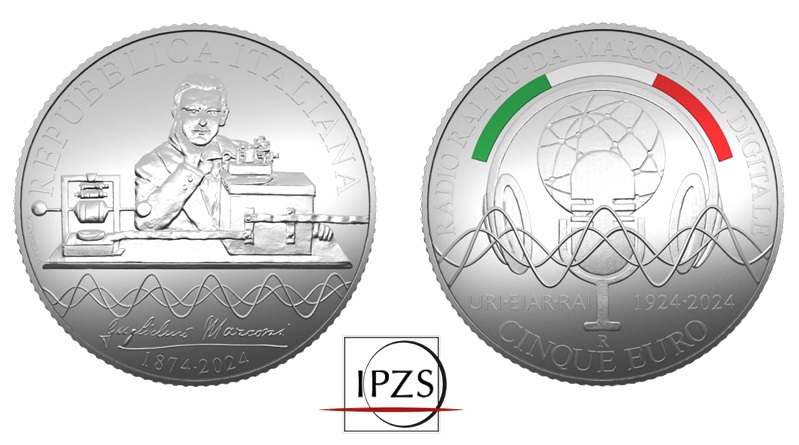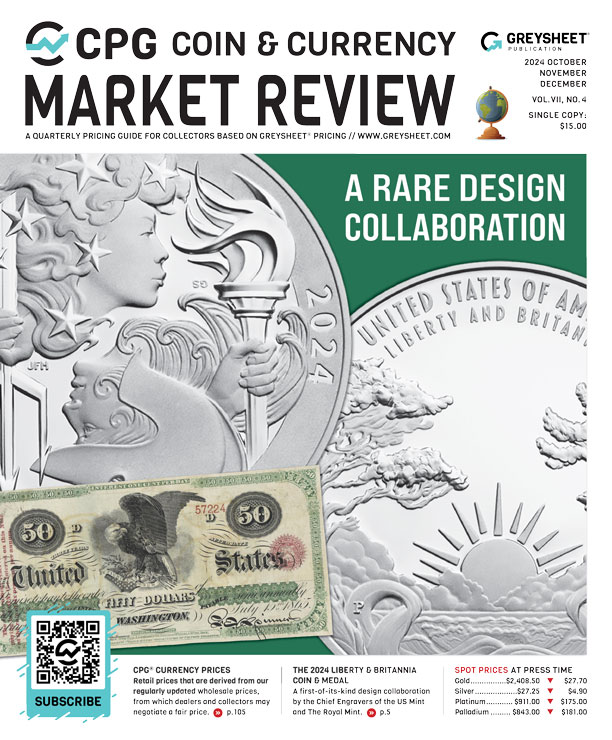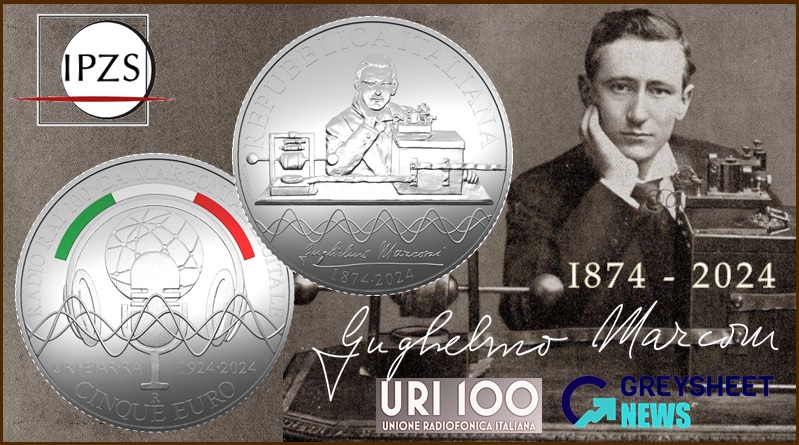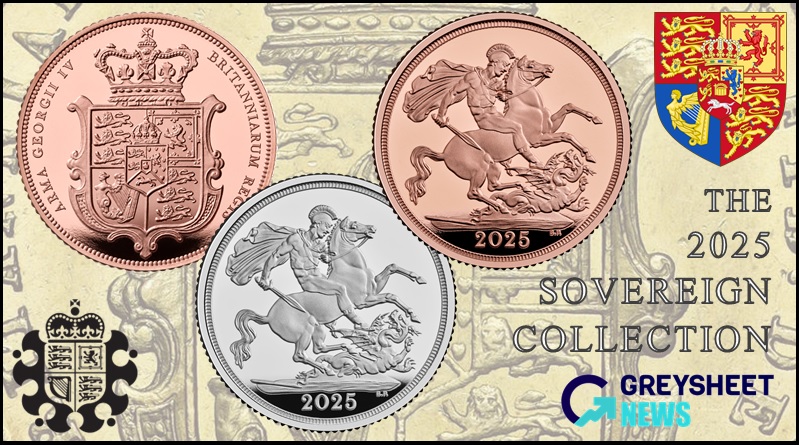Italy: New BU Colour Silver Coin Marks 150th Anniversary Of The Birth Of Radio Pioneer Guglielmo Marconi
The IPZS release new BU silver coins with colour honouring the country’s pioneer inventor of radio.
The commemorative coins mark two important anniversaries, that of the 150th anniversary of the birth of Guglielmo Marconi and of the 100th anniversary of the first national radio broadcast.
Remembered worldwide as the ‘Father of Radio’, Italian physicist Guglielmo Giovanni Maria Marconi was born in Palazzo Marescalchi in Bologna on the 25th April 1874. He was the second son of Giuseppe Marconi, an Italian aristocrat landowner and his Irish wife Annie Jameson, a member of the renowned Jameson whiskey distillers. Schooled at home by a series of private tutors hired by his parents, Guglielmo excelled at chemistry, mathematics, and physics. It was professor Vincenzo Rosa, a high school physics teacher who taught the 17-year-old Marconi the basics of physical phenomena as well as new theories on electricity and from then on, his interest in science and electricity was keenly evident. In the early 1890s, he began working on the idea of ‘wireless telegraphy’ or, the transmission of telegraph messages without connecting wires as used by the electric telegraph. Finding little interest or appreciation for his work in Italy, Marconi travelled to London in early 1896 at the age of 21 seeking support for his work. Speaking fluent English, Marconi gained the interest and support of the Chief Electrical Engineer of the General Post Office. It was at this time that Marconi applied for a patent of his system dated the 2nd June 1896. British Patent number 12039 titled ‘Improvements in Transmitting Electrical impulses and Signals, and in Apparatus therefor’ wad issued to him and which became the first patent for a communication system based on radio waves.
At the turn of the 20th century, Marconi began investigating a means to signal across the Atlantic to compete with the transatlantic telegraph cables. Using a kite to fly a 150-meter or, 490 feet long antenna to receive a signal, Marconi sent the first transatlantic radio transmission on December 12, 1901. The signal was sent from Poldhu, Cornwall, England, and received in Newfoundland, Canada 2100 miles away. His assistant George Kemp, heard the signal using a telephone receiver. This achievement, the first reception of transatlantic radio signals, led to considerable advances in both science and technology which was especially useful with transatlantic travel. With the ability to help distressed ships at sea, Marconi's initial technology enabled ships such as the Titanic when it collided with an iceberg on its maiden voyage in 1912. The first wireless distress calls with its current position 41.44 N. 50.24 W" was sent at 12:15 am and was received by The RMS Carpathia who steamed towards the Titanic's position within ten minutes.
In recognition of his extraordinary work, Marconi was named as a Senator in the Senate of the Kingdom of Italy in 1914 and appointed Honorary Knight Grand Cross of the Royal Victorian Order in the UK. In 1929, he was ennobled with the title of a marquess by King Victor Emmanuel III. He died on the 20th July 1937 at the age of 69 and was accorded a state funeral and as tribute, at 6:pm transmitters around the world observed two minutes of silence in his honour. Marconi was interred in the family mausoleum on the grounds of Villa Griffone.
Italy’s first national broadcast, 1924
It was on the 6th October 1924 that Unione Radiofonica Italiana - URI (Italian Radiophonic Union) the exclusive nationwide radio broadcaster of the Kingdom of Italy began their first day of programming. The programming was inaugurated with the words
"URI—Unione Radiofonica Italiana Rome station 1RO 425 metres wavelength. To all those who are listening, our greetings and good evening"
Spoken by Maria Luisa Boncompagni, it was her voice which became the most familiar to listeners, ultimately being nicknamed ‘the radio nightingale’. In 1927, URI transitioned to the company known as Ente Italiano Audizioni Radiofoniche – EIAR (Italian Body for Radio Broadcasting) the public service broadcaster which was the only entity permitted to broadcast by the government. With the first television broadcasting in Italy in July 1939, and towards the end of the Second World War in 1944, EIAR was replaced with Radio Audizioni Italiane (RAI) which was amended to reflect regular television broadcasts in 1954 to RAdiotelevisione Italiana, the current national broadcaster.

Designed by IPZA graphic artist Uliana Pernazza, she depicts the inventor of the telegraph Guglielmo Marconi sitting behind his radio transmitter used for his first experiments with the aim of developing a system of wireless telecommunication at a distance. The motif is inspired from an actual photograph taken of the 29 year old Marconi in 1903 during his demonstration of his patented wireless telecommunication system. Below Marconi is a representation of sound waves as well as a facsimile of his signature and the commemorative years 1874 - 2024. Above the primary design along the upper rim is the text REPUBBLICA ITALIANA. The reverse side features stylised graphic compositions of figurative elements representing radio broadcasts which include a microphone, headphones, sound-waves and in the background, the globe. Above the design along the rim is the inscription RADIO RAI 100 ◦ DA MARCONI AL DIGITALE with an arched banner shown in the three colours of the Italian flag placed above the headphones. Below the sound-waves is the additional commemorative text denoting the three primary national radio and television stations URI · EIAR · RAI 1924 – 2024. The denomination CINQUE EURO is seen along the lower rim and letter R denoting the Mint of Rome is placed just above the coin’s face value.
| Denomination | Metal | Weight | Diameter | Quality | Maximum Mintage |
| 5 Euro | .925 Silver | 18 g. | 32 mm. | BU | 4,000 |
Available from the 2nd October, each coin is encapsulated and presented in a coin folder with side magnetic closure. For additional information, please visit the e-webshop of the IPZS.

Download the Greysheet app for access to pricing, news, events and your subscriptions.
Subscribe Now.

Subscribe to CPG® Coin & Currency Market Review for the industry's most respected pricing and to read more articles just like this.
Author: Michael Alexander












Please sign in or register to leave a comment.
Your identity will be restricted to first name/last initial, or a user ID you create.
Comment
Comments